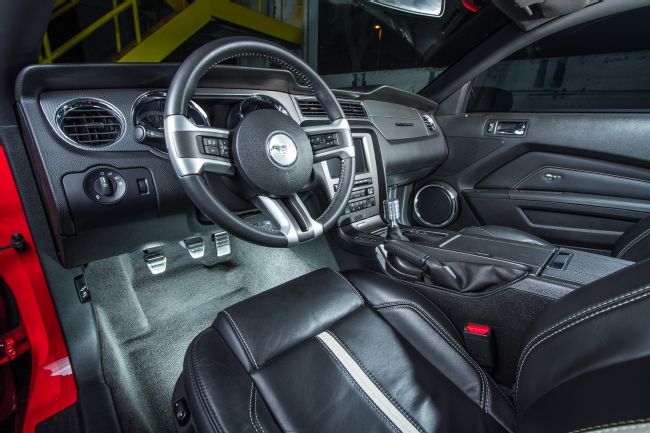
We Test the Steeda Mustang Clutch Assist Spring With Great Results Find Better Feel: We test Steeda's Mustang clutch assist spring with great results
Evan J. Smith Freelancer
Sliding the clutch and shifting with lightning speed is one way to get maximum performance from your Mustang. Those who prefer a manual transmission understand the importance of smooth clutch, transmission, and shifter operation. They also value being a direct part of the acceleration process.
While the 2011-present Mustangs offer great styling and amazing acceleration, there are a few shortcomings. One is the clutch pedal. Many owners dislike the overly light feel (especially on 2015 and newer models). Even worse, the pedal can actually stick to the floor during aggressive upshifts.
The light feel comes in part from a helper spring mounted on the clutch pedal, which Ford engineered to assist clutch actuation. "The factory high-rate [clutch assist] spring is what causes such a vague and disconnected clutch pedal feel," says Glen Vitale of Steeda. "The clutch pedal travels in a circular arc, with the spring assist in the middle of that clutch pedal travel. The middle of that motion compresses the spring initially and then allows it to extend after the first 30 degrees of travel. The combination of a high-rate assist spring and motion of the pedal during engagement causes a nonlinear and sometimes confusing pedal feel."
Some owners have removed the spring entirely in an effort to find better feel, but this is not the best option. "Mustang owners have found that taking out the stock spring will give them a better-feeling clutch," Vitale says, "but realistically the clutch becomes far too heavy, especially if your Mustang is daily driven. And most owners fail to realize the prolonged effects of simply taking out the factory spring and not replacing it with something better.
"By negating your factory clutch assist spring you will notice chatter and NVH from your clutch pedal," says Vitale. "Your clutch pedal will never fully return to stock position without any assist spring, and over time your slave cylinder may begin leaking due to constant pressure on its seals from the clutch pedal not returning to the stock position."
A quick, easy fix is to install Steeda's clutch assist spring, which sells for just $9.95 and installs in seconds--well, maybe a minute or two. "Our Steeda Mustang clutch assist spring has only 35 lb/in and replaces the factory 185-lb/in assist spring," explains Vitale. "Our engineers have honed in on the right amount of spring rate to achieve the perfect clutch pedal feel. Our spring ensures a consistent feel and minimal sag, even after repeated use, plus it is backed by our lifetime warranty."
Interested to feel the difference, we did a before-and-after test on Steeda's 2014 supercharged Q650 Mustang. Having driven this very pony to Mustang Week in 2014, we were quite familiar with the vehicle and the clutch. Still, we wanted a refresher, so we hopped in and took the Stang for a spirited drive.
Clutch actuation with the stock helper spring was OK at best. We didn't experience the clutch-sticking problem, but we did notice the difference in feel as the pedal was depressed and released. I could feel the difference in the pressure required to push the clutch to the floor, and the same thing was felt during release. Essentially the pedal is easy, then slightly stiffer, then easy at the bottom.
We then installed the 35-lb/in Steeda clutch assist spring. There wasn't a huge difference in the overall pressure required, but it was noticeable. The big change was in the middle of the pedal throw. Pressure was now uniform and consistent. In addition, you could really feel the point of release and when the clutch grabbed.
While the S197 Mustangs do not have a superlight clutch, the same can't be said for the overly light 2015 and up S550 Mustangs. These models will most certainly benefit from the Steeda spring. Let's face it: When you're jamming gears, the last thing you want is an inconsistent clutch pedal. The Steeda clutch assist spring is one item we wouldn't want to live without.

01. We did the before-and-after clutch spring test on Steeda's own 2014 Q650 Mustang.
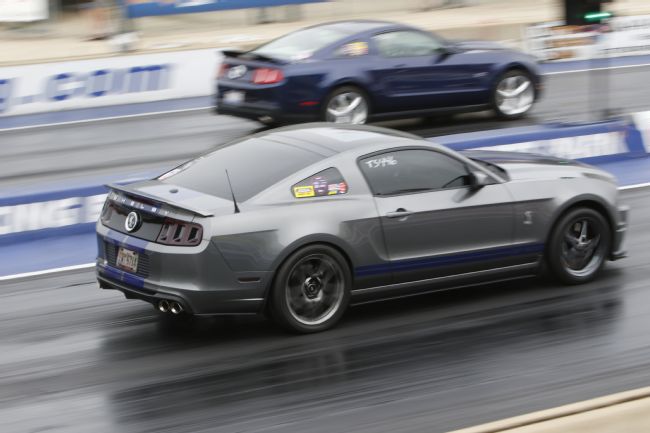
02. Steeda's clutch spring will work on any 2011-present Mustang, including V-6, EcoBoost, 5.0 GT, Shelby GT350, and GT500.
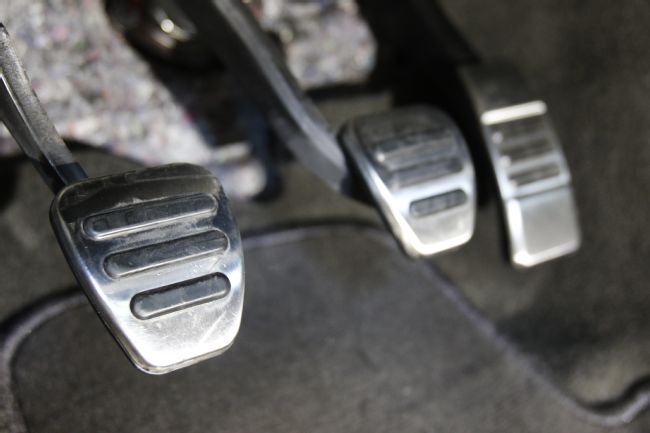
03. If you're looking to improve clutch feel and reduce the chance of your clutch pedal sticking to the floor, you'll want to check out Steeda's clutch assist spring. It sells for under $10 and installs in seconds.


04-05.The clutch assist spring is located on the right side of the clutch pedal. You'll need to hold the clutch pedal to the floor to remove the spring. This can be done with a friend helping, or you can use a pry bar like we did.
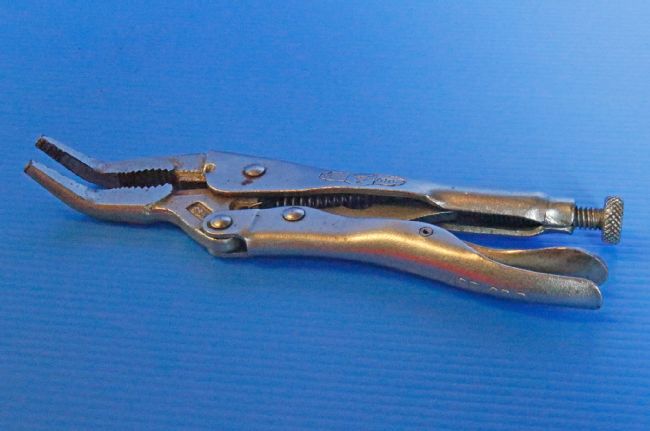

06-07. Next, use a pair of needle-nose vise grips to compress the spring. This will allow you to pop the spring from the upper mount.
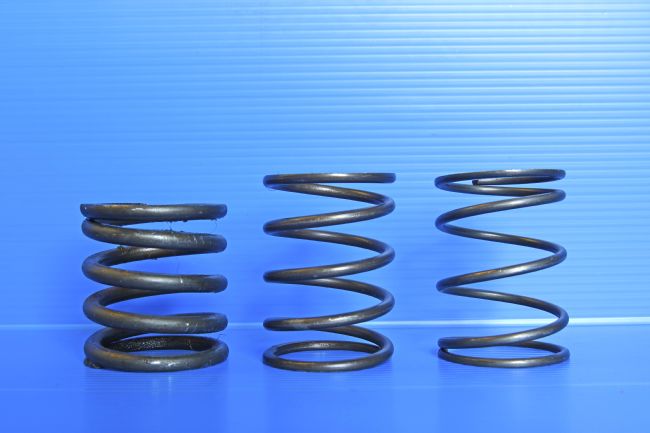
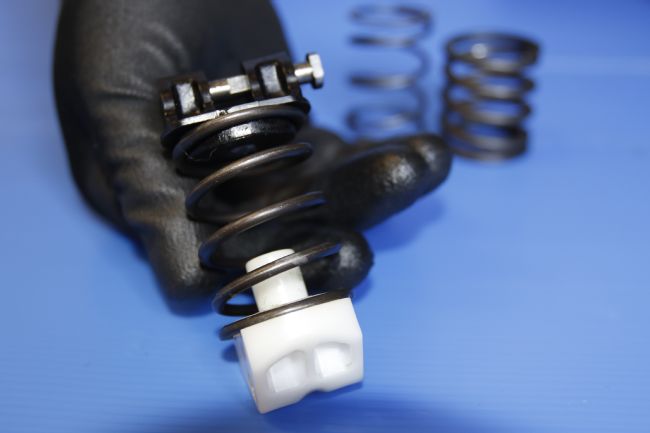
08-09. Steeda offers two different springs (stock is on the left). We chose the middle spring, which you can see with the upper and lower mounts.
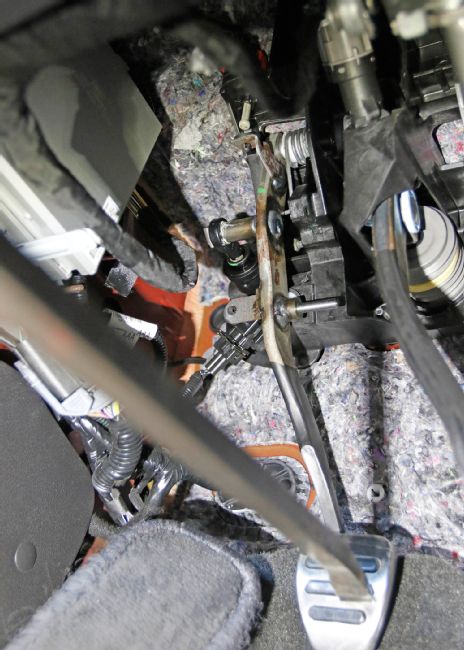
10. To reinstall, simply slide the white lower mount over the stud on the clutch pedal and snap the upper mount and pin into the receiving slot on the bracket. Lastly, let the clutch pedal come back to the top and work the pedal to ensure that the spring is seated properly.

